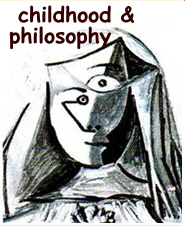on the logic of the program of philosophy for children
Keywords:
Lipman, Programa Filosofia para Crianças, lógica formal, lógica das boas razões, lógica do agir racionalAbstract
This article aims to present part of the results from the Scientific Initiation research entitled Logical Foundations of Education for Thinking. Specifically, the exposed contents are the logical ones developed by Matthew Lipman in his philosophical novel Harry Stottlemeier’s discovery. The text is divided in three main sections: formal logic, logic of good reasons and logic of rationally acting. In the first one, we map the contents of formal logic present in that novel. In this context, we studied Aristotelian logic in a progressive manner, passing from the simplest elements to the more complex, namely: the categorical propositions, the reversal of categorical propositions, standardization, the table of opposites, the logic of relations and, finally, the Aristotelian syllogism (and the invalid forms of). After that, we deal with other aspects of formal logic worked in Lipman’s view. They are: the hypothetical syllogism, induction, the logical relationship between part and whole, the four possibilities and tautologies. In the second section, we present an approach about the logic of good reasons. Finally, the third and final section, entitled The Logic of rationally acting, the emphasis lies in the constant and daily use of reflection, in other words, we see that the logic of rationally acting is targeting the use of reflective thinking to obtain a reasonable behavior. Key-words: Lipman; Philosophy for Children, formal logic; logic of good reasons; logic of rationally actingDownloads
Published
2010-02-02
How to Cite
catalani, cesar, & velasco, patrícia del nero. (2010). on the logic of the program of philosophy for children. Childhood & Philosophy, 5(10), p. 283–316. Retrieved from https://www.e-publicacoes.uerj.br/childhood/article/view/20589
Issue
Section
articles




